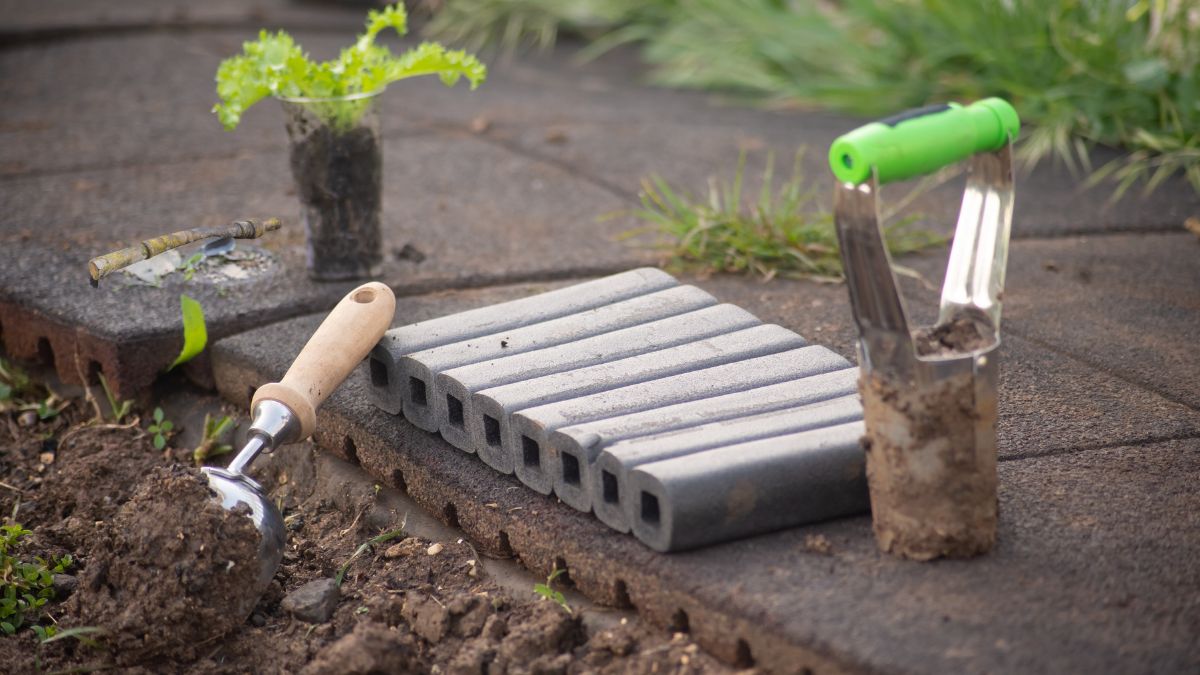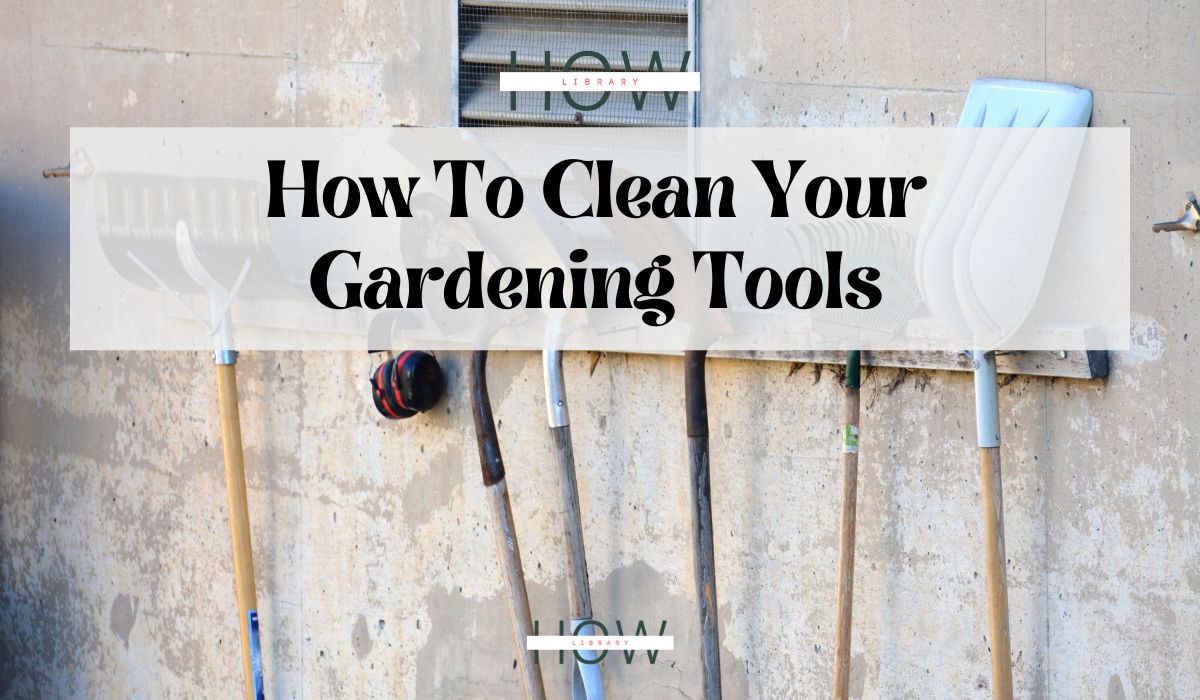Hey there, gardening enthusiasts! If you’re reading this, it means you’re looking for ways to keep your gardening tools in tip-top shape. And guess what? You’ve come to the right place! In this article, we’ll delve into the best tips and tricks for cleaning your gardening tools like a pro. So, let’s get down and dirty with the nitty-gritty of garden tool maintenance.
Why Clean Your Gardening Tools?
First off, let’s talk about why it’s essential to clean your gardening tools regularly. There are several reasons, but here are the top three:
- Prolong the life of your tools: Cleaning and proper maintenance help prevent rust and corrosion, ensuring your tools last longer and perform optimally.
- Prevent the spread of diseases: Dirty tools can harbor harmful bacteria and fungi, which can spread diseases from one plant to another.
- Improve efficiency: A clean, well-maintained tool is easier to use, reducing the risk of injury and making your gardening tasks more enjoyable.
Tools and Materials You’ll Need
Before we dive into the cleaning process, let’s gather the necessary tools and materials. You’ll need:
- A stiff brush or an old toothbrush
- A garden hose with a spray nozzle or a bucket of water
- Dish soap or a mild detergent
- A wire brush or steel wool
- A sharpening stone or file (for sharpening blades)
- Sandpaper (medium and fine grit)
- Linseed oil or a rust inhibitor
- Clean rags or towels
- Rubber gloves (optional)
Now that we’ve got everything we need, let’s start cleaning!
How To Clean Your Gardening Tools: Step-By-Step Guide

Remove dirt and debris:
The first step in cleaning your gardening tools is to remove any loose dirt and debris. Use a stiff brush or an old toothbrush to scrub off the dirt. For tools with stubborn dirt, you can use a garden hose with a spray nozzle or soak them in a bucket of water to loosen the grime.
Clean with soapy water:
Fill a bucket with warm water and a few drops of dish soap or mild detergent. Dip your tools into the soapy water and scrub them with a brush. Be sure to clean all parts of the tool, including the handle and any moving parts. Rinse the tools with clean water and dry them with a clean rag or towel.
Remove rust and corrosion:
If you notice any rust or corrosion on your tools, use a wire brush or steel wool to scrub it off. You can also use sandpaper (medium grit) to remove any stubborn rust spots. Remember to be gentle while scrubbing to avoid damaging your tools.
Sharpen blades:
Dull blades can make your gardening tasks more difficult and even dangerous. To keep your tools sharp, use a sharpening stone or file to sharpen the blades of tools like pruners, shears, and knives. Hold the tool at the correct angle and move it in a smooth motion against the stone or file. Be sure to maintain a consistent angle for an even edge.
Smooth handles:
Wooden handles can develop splinters and rough spots over time. To prevent this, use fine-grit sandpaper to smooth the handle’s surface. This will make your tools more comfortable to use and reduce the risk of injury.
Apply linseed oil or rust inhibitor:
To protect your tools from rust and maintain their longevity, apply a coat of linseed oil or rust inhibitor to the metal parts of your tools. For wooden handles, linseed oil can help preserve the wood andprevent it from drying out or cracking. Use a clean rag or towel to apply the oil or rust inhibitor, and then let it dry before storing your tools.
Store your tools properly:
Proper storage is crucial for keeping your gardening tools in good condition. Store your tools in a dry, well-ventilated area away from direct sunlight and moisture. Hang your tools on hooks or pegboards to prevent them from touching the ground, which can lead to rust and corrosion. Make sure your tools are completely dry before storing them to avoid moisture buildup.
Extra Tips and Tricks for Cleaning Your Gardening Tools
Now that we’ve covered the basics of cleaning your gardening tools, here are some extra tips and tricks to help you get the most out of your cleaning routine:
- Clean your tools after each use: Cleaning your tools after each use helps prevent dirt and debris from hardening and becoming more challenging to remove. Plus, it helps reduce the risk of spreading diseases between plants.
- Wear gloves when cleaning your tools: Wearing gloves can protect your hands from dirt, grime, and sharp edges while cleaning your gardening tools. Plus, it helps keep your hands clean!
- Use a toothbrush for hard-to-reach areas: An old toothbrush can be a handy tool for cleaning hard-to-reach areas of your gardening tools, like the hinges and joints of pruners and shears.
- Regularly inspect your tools for damage: While cleaning your tools, take the time to inspect them for any damage, like cracks or loose parts. Addressing these issues promptly can help prevent further damage and prolong the life of your tools.
- Don’t forget about power tools: If you use power tools in your garden, like a hedge trimmer or chainsaw, make sure to clean and maintain them according to the manufacturer’s instructions. This may include cleaning the air filter, replacing the spark plug, and lubricating moving parts.
Conclusion
Cleaning and maintaining your gardening tools is a crucial aspect of gardening that often goes overlooked. With this comprehensive guide, you now have all the information you need to keep your tools in tip-top shape, making your gardening tasks more enjoyable and efficient. So go ahead, roll up your sleeves, and show your gardening tools some love! Happy gardening!

